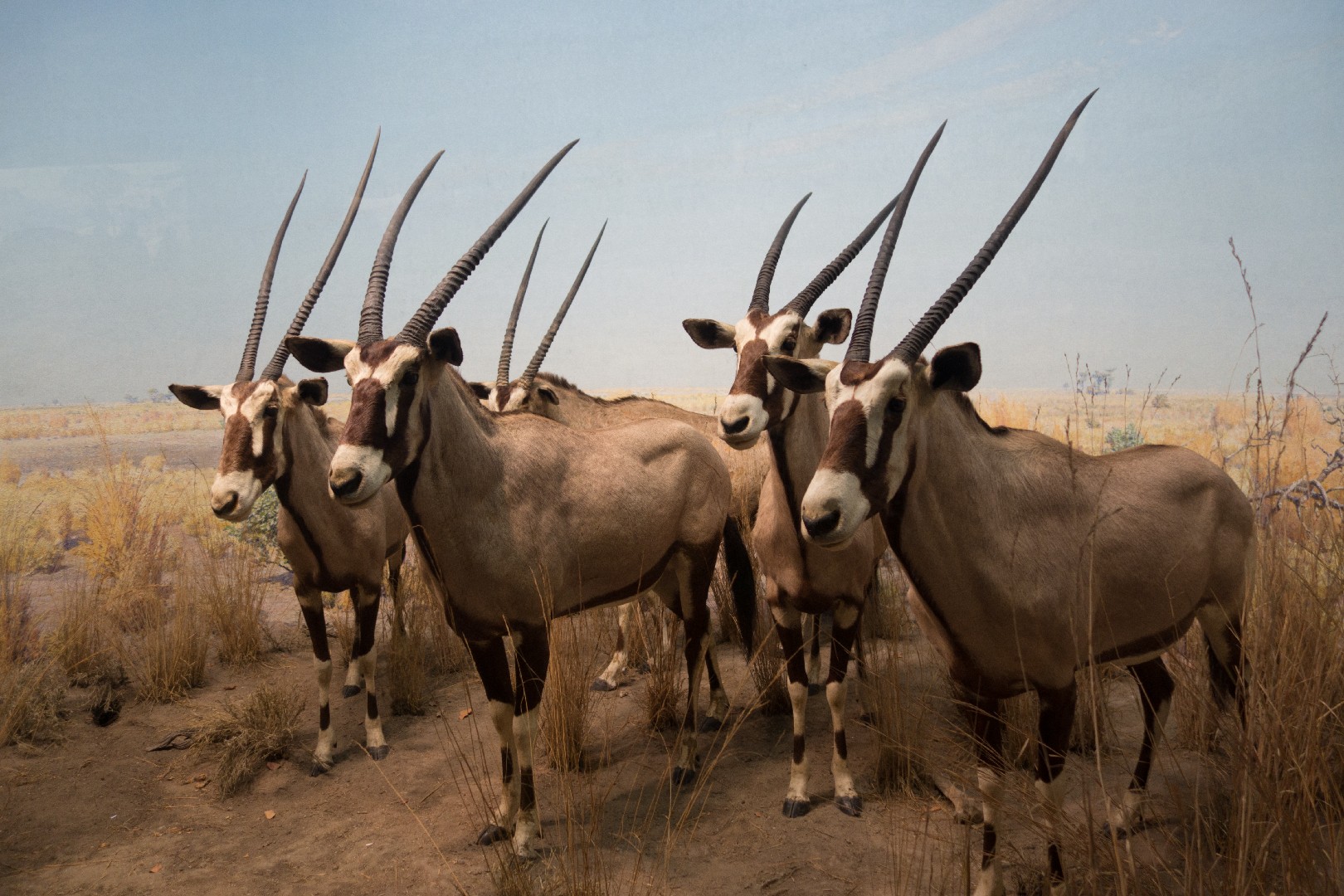Gemsbok
A species of Oryxes, Also known as South african oryx, Southern gemsbok Scientific name : Oryx gazella Genus : Oryxes
Gemsbok, A species of Oryxes
Also known as:
South african oryx, Southern gemsbok
Scientific name: Oryx gazella
Genus: Oryxes
Content
Description General Info
 Photo By Thomas Quine , used under CC-BY-2.0 /Cropped and compressed from original
Photo By Thomas Quine , used under CC-BY-2.0 /Cropped and compressed from original Description
Gemsbok are light brownish-grey to tan in colour, with lighter patches toward the bottom rear of the rump. Their tails are long and black in colour. A blackish stripe extends from the chin down the lower edge of the neck, through the juncture of the shoulder and leg along the lower flank of each side to the blackish section of the rear leg. They have muscular necks and shoulders, and their legs have white 'socks' with a black patch on the front of both the front legs, and both genders have long, straight horns. Comparably, the East African oryx lacks a dark patch at the base of the tail, has less black on the legs (none on the hindlegs), and less black on the lower flanks. One very rare condition is the "Golden Oryx", in which the Gemsboks black markings are muted and now appear golden. Gemsbok are the largest species in the genus Oryx. They stand about 1.2 m (3.9 ft) at the shoulder. The body length can vary from 190 to 240 cm (75 to 94 in) and the tail measures 45 to 90 cm (18 to 35 in). Male gemsbok can weigh between 180 and 240 kg (400 and 530 lb), while females weigh 100–210 kg (220–460 lb). 
General Info
Lifespan
18-20 years
Diet
Gemsbok predominantly feeds on dense grasses and thorn bush twigs. This species demonstrates adaptive feeding patterns in response to seasonal changes, varying its diet with roots, flowers, wild melons, especially in dry spells.
Appearance
The gemsbok is a large antelope with a slender build and a coat that is pale sandy-brown. They are adorned with long, straight, backward-slanting horns, which are ringed for most of their lengths. Notable characteristics include a black facial marking that extends from the corner of the eye to the mouth, and black stripes marking their flanks. There is minimal sexual dimorphism, though males are slightly larger than females.
Behavior
Gemsbok is known for its sedentary behavior, usually resting during the hottest parts of the day and feeding in the morning and evening. A social animal, it forms herds of 10-40 members led by a dominant male. Its territorial behaviors include males marking boundaries with droppings or paw scrapings. Adapted to arid habitats, gemsbok can survive long periods without water by metabolizing fat stored in its hump.
Population
Stable